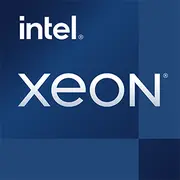Intel Xeon W-10885M

Intel Xeon W-10885M: Power and Compromises in a Mobile Format
April 2025
Architecture and Process: The Legacy of 14 nm
The Intel Xeon W-10885M processor, built on the Comet Lake architecture, exemplifies how Intel continued to extract maximum performance from its proven 14 nm process even in the late 2020s. Despite the fact that by 2025 most competitors have transitioned to 5 nm and 3 nm standards, this chip remains relevant due to optimization and high clock speeds.
Key Features:
- 8 cores, 16 threads with Hyper-Threading support.
- Base Frequency: 2.4 GHz, Max Turbo Boost Frequency: 5.3 GHz (for a single core).
- Integrated Graphics: Intel UHD Graphics for the 10th generation (24 EU, frequency up to 1.2 GHz).
Architecture Features:
Comet Lake is oriented towards multithreaded performance, but the iGPU here is a weak point. The integrated graphics are suitable only for basic tasks: office applications, 4K video playback, but not for gaming or 3D modeling. For professional tasks, a discrete graphics card (such as NVIDIA RTX A5000 or AMD Radeon Pro W6600M) is required.
TDP 45 W: Balancing Power and Heat
With a declared TDP of 45 W, the processor is designed for mobile workstations and gaming laptops. However, under load, power consumption can reach 90–100 W in turbo mode, necessitating an advanced cooling system.
Practical Nuances:
- In thin laptops (case thickness < 20 mm), the Xeon W-10885M will throttle due to overheating.
- In devices with massive coolers (e.g., MSI WS66 or Dell Precision 7560), the chip reaches its potential, but fan noise becomes noticeable.
Performance: Numbers and Reality
Geekbench 6:
- Single-Core: 1542 (comparable to Apple M2).
- Multi-Core: 6953 (close to AMD Ryzen 9 5900HX).
Real-World Scenario Tests:
- Office Tasks (Excel, browser with 50+ tabs): The processor operates at base frequencies, with temperatures remaining between 50–60°C.
- Blender Rendering: All cores loaded at 100%, frequency drops to 3.8–4.1 GHz after 10 minutes due to overheating.
- Gaming (Cyberpunk 2077, Ultra, 1080p): Paired with NVIDIA RTX 3080 Mobile, average FPS is 65–70, but during extended sessions, drops to 50 FPS due to throttling.
Turbo Boost: The maximum frequency (5.3 GHz) is available only for short load durations (up to 30 seconds), such as during application launches or photo processing in Lightroom.
Use Cases: Who is This Processor For?
1. Professionals: Engineers, architects, video editors. The chip supports ECC memory (up to 128 GB DDR4-2933), which is critical for workstations.
2. Gamers: But only in conjunction with a powerful graphics card and effective cooling.
3. Developers: Code compilation, virtualization (8 cores allow for running multiple VMs simultaneously).
Examples of Software Where Xeon W-10885M Excels:
- AutoCAD, SolidWorks (utilize multithreading).
- DaVinci Resolve (4K rendering).
- MATLAB (complex computations).
Battery Life: The Price of Performance
With a TDP of 45 W, battery life in laptops with this processor rarely exceeds 4–5 hours (web surfing, office tasks). In maximum performance mode — up to 1.5 hours.
Energy-Saving Technologies:
- Intel Speed Shift: Dynamically changes frequency based on load.
- C-states: Disables unused cores.
Recommendation: Choose laptops with a battery of at least 90 Wh (for example, Lenovo ThinkPad P15) — this will extend battery life to 6–7 hours in light scenarios.
Comparison with Competitors
1. AMD Ryzen 9 6900HS (6 nm, Zen 3+):
- Pros: Better energy efficiency, higher performance in multithreaded tasks (Geekbench 6 Multi-Core ~7500).
- Cons: No ECC memory support.
- Laptop Price: From $2200 (Asus ROG Zephyrus G15).
2. Apple M2 Pro (5 nm):
- Pros: Battery life up to 18 hours, cool operation.
- Cons: Limited compatibility with Windows software, no RAM/SSD upgrades.
- Price: From $2500 (MacBook Pro 16").
3. Intel Core i9-11980HK (10 nm, Tiger Lake):
- Pros: Higher IPC, support for PCIe 4.0.
- Cons: Only 8 cores, more expensive (laptops from $2800).
Conclusion: The Xeon W-10885M is suitable for those for whom ECC memory and stability in professional tasks are critical.
Pros and Cons
Strengths:
- Support for ECC memory and vPro for corporate security.
- High single-core performance.
- Compatibility with Windows/Linux.
Weaknesses:
- Outdated 14 nm process → high power consumption.
- Requires expensive cooling systems.
- iGPU is weak for modern tasks.
Laptop Selection Recommendations
1. Type of Device:
- Workstation: Dell Precision 7560, HP ZBook Fury 17 G8.
- Gaming Laptop: MSI WS66, Acer ConceptD 7.
2. What to Look For:
- Cooling: At least two fans + copper heat pipes.
- Battery: At least 90 Wh.
- Memory: 32 GB DDR4 + upgrade slots.
Average Price in 2025: $2400–$3500.
Final Conclusion
The Intel Xeon W-10885M is suitable for:
- Engineers and designers who need stability and ECC memory.
- Gamers who are willing to tolerate fan noise for high frame rates.
- Corporate users who value vPro technology.
Main Benefits: Desktop-level power in a mobile format, but with compromises in battery life and heat. If you do not need ECC memory, consider the AMD Ryzen 9 or Apple M2 Pro — they are more efficient in 2025.
Basic
CPU Specifications
Memory Specifications
GPU Specifications
Miscellaneous
Benchmarks
Compared to Other CPU
Share in social media
Or Link To Us
<a href="https://cputronic.com/en/cpu/intel-xeon-w-10885m" target="_blank">Intel Xeon W-10885M</a>